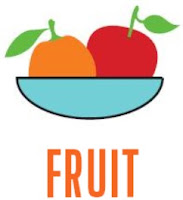みなさん、こんにちは!
お盆ウイーク、いかがお過ごしでしょうか。
いや~思っていた以上にバタバタしてしまいまして、しばらく記事を更新できなくてすみませんでした。
いや~もう、みなさ~ん。大丈夫ですか?
元気にされておりますか?
今やっと実家につきまして、スイカを浴びるほど食べながら書いております。
スイカでお腹タプタプです。
さて、今回皆様にご紹介したいと思う内容は、
「仏具のルーツと意義」。
お盆ウイーク、いかがお過ごしでしょうか。
いや~思っていた以上にバタバタしてしまいまして、しばらく記事を更新できなくてすみませんでした。
いや~もう、みなさ~ん。大丈夫ですか?
元気にされておりますか?
今やっと実家につきまして、スイカを浴びるほど食べながら書いております。
スイカでお腹タプタプです。
さて、今回皆様にご紹介したいと思う内容は、
「仏具のルーツと意義」。
アメリカSGIのワールドトリビューン紙が結構な紙面を割いて、説明してくれています。
確かに日本人だとしても、じーちゃん、ばーちゃんは知っているけど、若い人はあまり知らないってことが多いかもしれませんね。
かく言う私も、あんまりよくわからない。笑。
かく言う私も、あんまりよくわからない。笑。
でも日本だと、そこまで詳しく知らなくても、なんでだろうって疑問には思わないかもしれませんね。。
しかし、海外のメンバーをちょっと想像してみましょうか。
仏教には何の縁もゆかりもない人がいきなり目にするものは、馴染みのあるものではなく、当たり前のことではありませんので、なんでそうするのかの説明がちょっとは必要になるかもしれません。
そして今回是非紹介しようと思ったのは、説明の仕方が大変素晴らしいなと感じたからです。
簡単な意味合いやルーツをただ説明するだけでなく、その根底にある一番大切な視点も、きちんとおさえられている。
実はこの部分の方が意義を知るよりもずっとずっと大事なことだと思うのです。
大変良くまとめられていますので、英語で仏具の意義を説明しなくてはいけない方には最適ですね。
ワールドトリビューン紙の英語版のみにしか記事がありませんので、私の微妙な対訳付きです。笑。何を説明しているのかの参考にしてみてください。
では!
夏バテしないでね!
掲載画像、文章引用元:World Tribune June 1 2018
日本語訳:『英語で創価』
簡単な意味合いやルーツをただ説明するだけでなく、その根底にある一番大切な視点も、きちんとおさえられている。
実はこの部分の方が意義を知るよりもずっとずっと大事なことだと思うのです。
大変良くまとめられていますので、英語で仏具の意義を説明しなくてはいけない方には最適ですね。
ワールドトリビューン紙の英語版のみにしか記事がありませんので、私の微妙な対訳付きです。笑。何を説明しているのかの参考にしてみてください。
では!
夏バテしないでね!
掲載画像、文章引用元:World Tribune June 1 2018
日本語訳:『英語で創価』
The Symbolism of Objects Placed on the Altar /仏具の意義とは。。。
Greens, incense, candles, fresh water and fruit are placed on the altar as an expression of sincerity, respect and praise for the Gohonzon. While chanting Nam-myoho-renge-kyo and reciting the sutra are fundamental, such offerings fall into the category of formalities, which are meant to dignify the altar area.
Most important is our sincere spirit to treasure and protect the Gohonzon through our practice.
常緑樹、香、ロウソク、お水、果物は、ご本尊への誠実さ、敬意、称賛を表すものとして仏壇に置きます。題目を唱え、経を読誦することが重要ですが、これらを供えることも礼儀に入っており、仏前を厳かにするものとされています。 最も重要なのは、私たちの信心を通してご本尊を大切にお守りしようとする誠実な気持ちにあります。
Most important is our sincere spirit to treasure and protect the Gohonzon through our practice.
常緑樹、香、ロウソク、お水、果物は、ご本尊への誠実さ、敬意、称賛を表すものとして仏壇に置きます。題目を唱え、経を読誦することが重要ですが、これらを供えることも礼儀に入っており、仏前を厳かにするものとされています。 最も重要なのは、私たちの信心を通してご本尊を大切にお守りしようとする誠実な気持ちにあります。
WATER/お水
 |
| ウオーター:お水 |
〈WATER〉
A cup of fresh water may be offered to the Gohonzon prior to doing morning gongyo and removed at the end of the day, just before evening gongyo. The tradition of offering water began in ancient India, where Shakyamuni lived and spread his teachings. Water has always been highly regarded in this hot climate and was customarily offered to guests.
In Sanskrit, the word for water also means “benefit” or “water of benefit.”
〈お水〉
お水は、朝の勤行を行う前にご本尊にお供えをし、夜の勤行をする前、その日の終わりにお下げするようにします。
お水を供えるという伝統は、釈尊がご在世の法を広めていた古代インドで始まりました。水はこの暑い気候では大変貴重で、お客様にもてなすのを慣例としていました。
サンスクリット語で、水という言葉には「功徳」、「功徳水」という意味があります。
お水を供えるという伝統は、釈尊がご在世の法を広めていた古代インドで始まりました。水はこの暑い気候では大変貴重で、お客様にもてなすのを慣例としていました。
サンスクリット語で、水という言葉には「功徳」、「功徳水」という意味があります。
FRUIT/果物
Fresh fruit is another offering to the Gohonzon. When offering food, we ring the bell three times, place our palms together and chant Nammyoho-renge-kyo three times as a gesture of deep appreciation.
〈果物〉
新鮮な果物はご本尊へのお供え物の一つです。食物をお供えする場合は、深い感謝を表すように、リンを三度打ち、手を合わせて題目を三唱します。
BELL/鈴(りん)
〈BELL〉
The pleasing tone of the bell is meant to harmonize the recitation of the sutra and chanting of Nammyoho-renge-kyo. There is no specific instruction on how many times to ring it during recitation of the sutra, though a general guide is given in The Liturgy of the Soka Gakkai International.
If you share a living space, care should be taken not to disturb others with loud ringing. Larger bells should be moderately struck on the outside upper rim.
If you share a living space, care should be taken not to disturb others with loud ringing. Larger bells should be moderately struck on the outside upper rim.
鈴(りん)
鈴(りん)の心地よい音色で、経の読誦と唱題の調和をはかります。経を読誦している間、鈴(りん)を何回打つのかについては明確な指定はありませんが、一般的な手引きとしては創価学会インターナショナルの勤行要典にあります。
もし生活スペースを共有している場合は、大きな音で他の人の迷惑にならないようにする必要があります。大きな鈴(りん)は外側の上縁を程よく打つようにしてください。
もし生活スペースを共有している場合は、大きな音で他の人の迷惑にならないようにする必要があります。大きな鈴(りん)は外側の上縁を程よく打つようにしてください。
INCENSE /香
Offerings of incense have a long history in ancient India, symbolizing such things as purification or an awakening of the senses.
Practitioners with young children, who have safety concerns, or who find incense a physical irritant, may prefer not to use them. Incense should not be placed too close to the altar.
Practitioners with young children, who have safety concerns, or who find incense a physical irritant, may prefer not to use them. Incense should not be placed too close to the altar.
〈香〉
香の供養は古代インドにおいて長い歴史があり、浄めるもの、感覚を覚醒させるものなどを表しています。
安全面で配慮のいる幼児がいる場合や、お香に刺激を感じる方は使用を控えた方がよいでしょう。お香は仏壇の近くには置かないようにしてください。
安全面で配慮のいる幼児がいる場合や、お香に刺激を感じる方は使用を控えた方がよいでしょう。お香は仏壇の近くには置かないようにしてください。
CANDLES/ロウソク
〈CANDLES〉
Candlelight symbolizes the light of Buddha wisdom, or our inherent wisdom with which to extinguish darkness and make all things visible. Candles therefore signal our awareness of our innate Buddha nature.
They should not be placed too close to the altar. Practitioners concerned with fire danger posed by candles, such as parents of small children, may opt to forego them or to use electric candles.
They should not be placed too close to the altar. Practitioners concerned with fire danger posed by candles, such as parents of small children, may opt to forego them or to use electric candles.
〈ロウソク〉
ロウソクの火は、仏の智慧の光、または闇を滅してすべてを見通せる、私たちの内にある智慧を表しています。ゆえにロウソクは、内在する仏性があることの自覚を示しているのです。 仏壇の近くには置かないようにしてください。小児のいるご家庭のようにロウソクによる火災の危険がある場合は、その使用をやめるか、電気ロウソクを使ってもよいでしょう。
ロウソクの火は、仏の智慧の光、または闇を滅してすべてを見通せる、私たちの内にある智慧を表しています。ゆえにロウソクは、内在する仏性があることの自覚を示しているのです。 仏壇の近くには置かないようにしてください。小児のいるご家庭のようにロウソクによる火災の危険がある場合は、その使用をやめるか、電気ロウソクを使ってもよいでしょう。
GREENS/常緑樹
 |
| グリーンズ:常緑樹 |
〈GREENS〉
Greens symbolize the Buddha’s enlightened physical property or compassionate action. Traditionally, greens have been used to adorn the space before the Gohonzon, because they bear leaves throughout the year, regardless of the season, representing permanence and purity. Plastic greenery is an acceptable substitute.
〈常緑樹〉常緑樹は、仏が悟りを得た身体的な特性や慈悲深い行いを表しています。伝統的に、常緑樹はご本尊、仏前の前を飾るために使われていました。なぜなら、季節にかかわらず年中葉をつけており、永続性や清らかさを表しているからです。プラスチック製の緑葉を代用してもかまいません。
おまけに・・
数珠(念珠)の話
 |
| 数珠(念珠) |
Traditionally, prayer beads were used to count the number of times a practitioner chanted a mantra, helping them focus. Therefore, they are referred to in Japanese as juzu, literally meaning “counting beads.”
伝統的に、数珠(念珠)は、繰り返し唱えた数を数えるためで、集中して唱える手助けとなっていました。それゆえ、日本語では文字通り「珠を数える」という意味で「数珠」とよばれています。
伝統的に、数珠(念珠)は、繰り返し唱えた数を数えるためで、集中して唱える手助けとなっていました。それゆえ、日本語では文字通り「珠を数える」という意味で「数珠」とよばれています。
Although Nichiren Daishonin does not mention in his writings specifics concerning the placement of the beads, today, we generally place them around the middle fingers of both hands— with three tufts on the right hand and two tufts on the left—twisting the loop in the middle.
日蓮大聖人は、数珠の配列に関して具体的には言及しておりませんが、今日一般的には、房が三本ある方を右手に、房が二本ある方を左手に、輪の中央で交差するようにして、両手中指にかけます。
日蓮大聖人は、数珠の配列に関して具体的には言及しておりませんが、今日一般的には、房が三本ある方を右手に、房が二本ある方を左手に、輪の中央で交差するようにして、両手中指にかけます。
The four smaller beads signify the four leaders of the Bodhisattvas of the Earth, who, as taught in the Lotus Sutra, vow to enable all people to become happy through practicing Buddhism. Thus, they can be said to signify our own vow for kosen-rufu.
4個の小さな珠は、法華経の教えにある地涌の菩薩の4人の導師を表しており、この信心ですべての人々が幸せになれるようにするための誓願で、私たち自身の広宣流布のための誓いを意味すると言えます。
要するに、念珠やお香のようなものは、信仰における決まった慣習(儀式的な側面)を成しているもので、最も肝心なのは、信心の中身なのです。 ***** どうでしたか? 必要最低限のルーツや意義など、ざっくりとおさえつつ、肝心な側面もきちんと入っています。そういうところが素敵ですね。 では! ==追加== update 11/17/2018 戸田先生がもっとも嫌われたのは、「形式主義」であった。ゆえに弟子の私も、徹底して「実質主義」の人間である。 President Toda detested formality. For this reason, as his disciple, I have tried to place foremost emphasis on substance. 「形式」が大切な場合もあるが、中身のない形式主義は悪である。(省略) Formalities are important in certain cases, but mere formality that lacks substance is an evil. たとえば会合をする。何人来たか、きちんとできたかーーどうしたことのみを気にし、形にとらわれて、実質を見失う。これでは失敗である。(省略) Suppose a meeting is held. if a person is caught up with formality, concerned only about how many people attend or whether the meeting goes off without a hitch, he loses sight of substance. This is a sign of failure as a leader. リーダーのための会合でもなければ、組織のための会合でもない。一人の「人間」の発心と成長のための集いなのである。 Our meetings are held neither for the sale of leaders nor for the sale of the organization. They are intended to awaken and support the development of individual members. 引用元: 日本語/親愛なるアメリカの友へ 英語訳/My dear friends in America/Daisaku ikeda















